“Wayne Smith and Teaching Games for Understanding: Game Sense encourages players to understand and appreciate the gameit enables them to make informed decisions, take ownership of their learning and exercise choice and control over how they play the game. (p.195)” “The games in TGfU are a key to designing training sessions. Invasion Games for Gym Class If you’re like most PE teachers you’re probably always looking for fun games to play in the gym. Games that keep the kids interested, especially when they’re in elementary school might be more difficult than when they’re older. And Kruisselbrink, D. ( 2002) ‘Teaching Games for Understanding: What does it Look Like and How does it Influence Skill Learning and Game Performance’, AVANTE 1-29. Google Scholar Jones, C. ( 1999 ) ‘The Transfer of Strategic Knowledge: A Test of the Games Classification Curriculum Model’, Bulletin of Physical. To conclude, invasion games were an effective way of improving physical fitness in primary school children, because the results of this study indicate that this method was more effective for physical fitness than traditional school program. Keywords invasion games. teaching.effects.children. Invasion/Territory-Type Games: Invasion/territory-type games involve controlling an object, keeping it away from opponents and moving it into a scoring position to score on a target. Games can be modified to be simple running games or to use a specified skill (kicking, throwing) (e.g., soccer, handball, ultimate Frisbee, football, basketball.
TGfU is a holistic teaching model which “provides a learner-centred approach that puts the needs and abilities of the participants first over the importance of the game”
(Mandigo & Butler, 2007, pg 14).
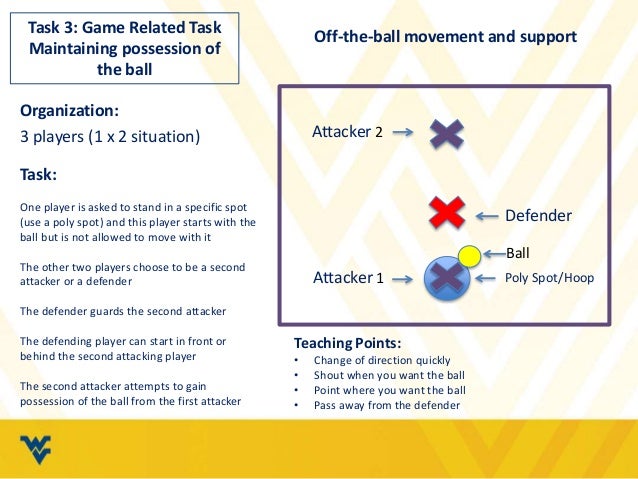
The primary objective of Teaching Games for Understanding is to produce players who are games literate. Players are classified to be games literate if they:
“A) have knowledge and understanding that enables them to anticipate patterns of play;
B) possess technical and tactical skills to deploy appropriate imaginative responses;
C) are able to experience positive motivational states while helping to facilitate motivation among others involved in the game”
(Mandigo & Holt, 2004, pg 6).
Games literacy thrives on the concept that different games can be grouped together because they share similar structures (Ellis, 1983). Games can therefore be categorised by structure into four different types. These are: Target games, Striking/fielding games, Net/Wall games, and Invasion/Territorial games (Ellis, 1983). Understanding these structures allows principles of play, tactical cognition and skill execution to be learned, mastered and transferred with efficacy to a variety of game situations and this ultimately leads to increased game play competence (Hopper & Bell, 2000).
The TGfU model follows a simplistic six stage procedure.
- Game: The model begins immediately with a game based upon a learning objective. The game is typically a smaller modification of a pre-existing formal game and demands a variety of skills relevant to a vast majority of situations within a game type.
- Game appreciation: a realisation of how the rules, skills required and strategy interact.
- Tactical awareness: Learners begin to formulate tactics of how to succeed within the game.
- Decision making: after developing tactics, learners discover how to make appropriate decisions regarding what they know. This usually involves timing or location – when to use certain skills or tactics based upon these parameters.
- Skill execution: Learners should have realised why certain skills are important and what are the benefits of executing them correctly.
- Performance: after progressing through the previous stages, has improvement been demonstrated? Are Learners achieving the objective of the game? Feedback is essential at this stage to reinforce understanding of the concepts learned so far. The game can then be progressed, or regressed depending upon the degree of learning that has taken place.
(Bunker & Thorpe, 1986).
Football falls into the category of invasion games (Eliis, 1983; Hughes & Bartlett, 2002). To effectively implement the TGfU model within invasion games, four criteria must be met. These criteria are: the use of progressive small-sided games and analysis, inventive game creation, developing effective attacking and defensive strategies, and an effective questioning strategy (Hubball et al., 2007).
The use of small-sided games (attack vs. defence) in a smaller area is an excellent way of replicating full-sized game conditions in an invasion game context. They promote more touches with the ball, which represent more passes, the need for intelligent movement and produce more shooting opportunities, developing efficacy in these technical components and the physical skills required to perform them.
Smaller sided games although less complex in design still encourage psychological engagement. Decision making is prevalent within the game but can also be encouraged during progressions of the game structure.
Adopting a democratic teaching style and allowing learners to make decisions about how they would like the game to be played and develop sustains intrinsic motivation levels. This is in accordance with Deci & Ryan’s (1985) Self-Determination Theory whereby individuals have an intrinsic yearning to feel autonomous, competent and related to others. Self determination needs are met when learners are given opportunities to make decisions (Chatzisarantis et al., 1997).
Inventive games are an excellent means of inspiring creativity within performers and encouraging emergent leaders to develop. Introducing new challenges and posing unusual problems inevitably encourage capable individuals to provide new and unorthodox solutions to them (Rink, 2002). Such ideology links with Riemer & Chelladurai’s (1995) Multi-dimensional model of sport leadership where effective leadership emerges from member and leader characteristics, situational requirement and the interaction between participants perceived behaviour during the task, the actual required behaviour for the task and the coach’s preferred behaviour of participants.
Inventive games also create an appreciation of how rules enforce equality and positive interaction between learners. Learners are enabled to share ideas and points of view in order to create new variations of the game (Hubball et al., 2007).
Leadership is also encouraged through developing attacking and defensive strategies. By implementing strategy which relies upon formation or position, players assume responsibilities and leaders naturally emerge or are appointed (Earles & Chase, 2001).
Such strategies which require positional responsibilities also promote team cohesion towards the tasks (objectives) of the game (Grehaine et al., 1999).
Developing tactics and strategies dependent on positions and responsibilities reflect a task-orientated environment – attacking and defensive players must work together to achieve specific goals as a team, regardless of prior skill levels of individuals within their team, particularly when competence is low such as during innovative games (Murcia, 2005; Papaioannou, 1995).
The importance of an effective questioning strategy is paramount, “…without it the approach will not succeed” (Webb & Pearson, 2008, pg 5). Effective questioning techniques can offer invaluable intervention to aid and reinforce student learning (Hopper, 2002; Hubball & Robertson, 2004). Opportunities to utilise can arise during game-play, between progressions but should always occur as a debrief to small-sided games (Hubball et al.,2007). Students should be inspired to think like coaches whilst still enjoying the intrinsic benefits of learning through game play (Light & Fawns, 2003).
Effective questioning utilises open-ended, probing questions to evoke higher levels of Bloom & Krathwohl’s (1956) cognitive taxonomy of learning and to achieve this a set of hierarchical questions must be planned based upon learning objectives (Richard & Godbout, 2000).
References
- Bloom, B. S., & Krathwohl, D. R. (1956). Taxonomy of educational objectives: The classification of educational goals by a committee of college and university examiners. Handbook I: Cognitive Domain. New York: Longman, Green.
- Bunker, D, & Thorpe, R. (1986). The curriculum model. In Thorpe, R, Bunker, D & Almond, L (Eds.) Rethinking games teaching. Loughborough University: University of Technology, Department of Physical Education and Sports Sciences, pp. 7-10.
- Chatzisarantis, N, L, D., Biddle, S, J, H., & Meek, G, A. (1997). A self-determination theory approach to the study of intentions and the intention-behaviour relationship in children’s physical activity. British Journal of Health Psychology, 2, pp. 343-360.
- Chelladurai, P. (1990). Leadership in sports: A review. International Journal of Sports Psychology, 21(4), pp. 328-354.
- Deci, E, D., & Ryan, R, M. (1985). Intrinsic motivation and self-determination in human behavior. New York: Plenum.
- Earles, M., & Chase, M. (2001). Enhancing team confidence for success. Strategies: A Journal for Physical and Sport Education, 14(3), pp. 12-14.
- Ellis, M. (1983). The classification and analysis of games: A system for the classification of games. Unpublished manuscript. University of Alberta, Edmonton, Alberta, Canada.
- Grehaigne, J, F., Godbout, P., & Bouthier, D. (1999). The foundation of tactics: Strategy in team sports. Journal of Teaching Physical Education, 18, pp. 159-174.
- Hopper, T. (2002). Teaching games for understanding: The importance of student emphasis over content emphasis. Journal of Physical Education, Recreation & Dance, 73(7), pp. 44-48.
- Hopper, T, & Bell, F. (2000). A tactical framework for teaching games: Teaching strategic understanding. Canadian Association for Health, Physical Education, Recreation and Dance Journal, 66(4), pp 14-19.
- Hubball, H, Lambert, J & Hayes, S. (2007). Theory to Practice: Using the Games for Understanding Approach in the Teaching of Invasion Games. In. Physical and Health Education, autumn 2007, pp. 14-20.
- Hubball, H, T., & Robertson, S. (2004). Problem-based learning in youth soccer academy program. Journal of Physical Education, Recreation & Dance, 75(4), pp. 38-43.
- Light, R, & Fawns, R. (2003). Knowing the game: Integrating speech and action in games teaching through TGFU. Quest. 55, pp. 161-176.
- Mandigo, J.L, & Holt, N.L. (2004). Reading the Game: Introducing the Notion of Games Literacy. In. Physical and Health Education, autumn 2004, pp. 4-10.
- Murcia, J,A,M. (2005). Goal Orientations, Motivational Climate, Discipline and Physical Self-Perception Related to the Teacher’s Gender, Satisfaction and Sport Activity of a Sample of Spanish Adolescent Physical Education Students. International Journal of Applied Sports Sciences, 17 (2), pp. 44-58.
- Papaioannou, A. (1995). Differential Perceptual and Motivational Patterns when Different Goals are Adopted. Journal of Sport and Exercise Psychology, 17, pp. 18-34.
- Richard, J, E., & Godbout, P., (2000). Formative assessment as an integral part of the teaching-learning process. Physical and Health Education Journal, 66(3), pp. 4-10.
- Riemer, H, A., & Chelladurai, P. (1995). Leadership and satisfaction in athletics. Journal of Sport and Exercise Psychology, 17, pp. 276-293.
- Webb, P, & Pearson, P. (2008). An Integrated Approach to Teaching Games for Understanding (TGfU). University of Wollongong: Faculty of Education. http://ro.uow.edu.au/edupapers/52
Teaching Game for Understanding in Physical Education: A Theoretical Framework and Implication
Abstract
ABSTRACT: The primary purpose of the present study was to investigate the effects of Teaching Games for Understanding (TGfU) approach to improve students’ learning outcome of tactical game performance in physical education. By applying the constructivism learning theory, the study wants to investigate whether the students learning outcome in tactical game performance can be improved with the TGfU approach. The participants in this study were 10 years old primary physical education students. The Game Performance Assessment Instrument (GPAI) was used to measure students' tactical understanding of game performance. The results of the validation studies showed that the instruments developed for the purposes of this project were valid indicators of tactical game performance. The ANCOVA results revealed that there was a significant difference between the students who were exposed to TGfU approach and students with traditional skill approach on the post-test (F [1, 69] = 248.83, p < .05). This result indicated that the experimental group with TGfU approach has significant main effects on student learning outcome compared to the traditional skill approach. The findings of this study showed that constructivism theory improved primary physical education students learning outcome in physical education.
KEY WORD: Teaching games for understanding, constructivism, tactical understanding, and primary physical education.
About the Authors:Malathi Balakrishnan is a Doctoral Candidate at the Department of Mathematics and Science Education, Faculty of Education UM (University of Malaya), Kuala Lumpur, Malaysia; Shabeshan Rengasamy, Ph.D. is a Senior Lecturer at the Department of Mathematics and Science Education, Faculty of Education UM; and Assoc. Prof. Dr. Mohd Salleh Aman is Director of Sport Centre at UM. They can be reached at: malathi@siswa.um.edu.my, shabesh@um.edu.my, and amanms@um.edu.my
How to cite this article? Balakrishnan, Malathi, Shabeshan Rengasamy & Mohd Salleh Aman.(2011). “Teaching Game for Understanding in Physical Education: A Theoretical Framework and Implication” in ATIKAN: Jurnal Kajian Pendidikan, Vol.1(2) Desember, pp.201-214. Bandung, Indonesia: Minda Masagi Press owned by ASPENSI in Bandung, ISSN 2088-1290.
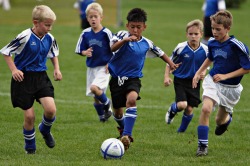
Chronicle of the article:Accepted (October 13, 2011); Revised (November 23, 2011); and Published (December 15, 2011).
References
Allison, P.C. & K.R. Barrett. (2000). Constructing Children’s Physical Education Experience: Understanding the Content for Teaching. Boston, MA: Allyn & Bacon.
Blomqvist, M., P. Luhtanen & L. Laakso. (2001). “Comparison of Two Types of Instruction in Badminton” in European Journal of Physical Education, 6, pp.139-155.
Bunker, B. & R. Thorpe. (1982). “A Model for Teaching Games in Secondary Schools” in Bulletin of Physical Education, 18, pp.5-8.
Bunker, B. & R. Thorpe. (1986). “The Curriculum Model” in R. Thorpe, D. Bunker & L. Almond [eds]. Rethinking Games Teaching. Loughborough, UK: University of Technology, pp.7-10.
Butcher, C.A. & D.A. Wuest. (1999). Foundation of Physical Education and Sport. London, UK: McGraw-Hill, 13th edition.
Butler, J. & B.J. McCahan. (2005). “Teaching Games for Understanding as a Curriculum Model” in L. Griffin & J. Butler [eds]. Teaching Games for Understanding: Theory, Research, and Practice. Windsor: Human Kinetics, pp.33-35.
Cai, X.S. (1998). “Students Enjoyment of Physical Education Class in Three Teaching Style Environments” in Education, 118(3), pp.412-420.
Chen, W., I. Revegno & A. Iran-Nejad. (2002). “Application of a Whole Theme Perspective to Movements Approach for Teaching Physical Education in Elementary School” in Education, 123, pp.401-415.
Darst, P.W. & R.P. Pangrazi. (2006). Dynamic Physical Education for Secondary School Students. San Francisco, CA: Pearson Education, 5th edition.
De Vries, L.A. (2008). “Overview of Recent Innovative Practices in Physical Education and Sports in Asia” in Innovative Practices in Physical Education and Sports in Asia. Bangkok, Thailand: UNESCO, pp.1-21.
Dodds, P., L.L. Griffin & J.H. Placek. (2001). “Selected Review of Literature on Development of Learners Domain-Specific Knowledge” in Journal of Physical Education, 20, pp.301-313.
French, K.E. & S.L. McPherson. (2003). “Development of Expertise” in M. Weiss & L. Bunker [eds]. Developmental Sport and Exercise Psychology: A Lifespan Perspective. Morgantown, WV: Fitness Information.
Greihaigne, J.F. & P. Godbout. (1998). “Observation, Critical Thinking, and Transformation: Three Key Elements for a Constructivist Perspective of the Learning Process in Team Sports”. Paper presented at the 1998 AIESEP world conference in Long Island, Adelphi University.
Invasion Games Teaching Games For Understanding Strategies
Grehaigne, J.F., P. Godbout & D. Bounthier. (2001). “The Teaching and Learning of Decision Making in Team Sports” in Quest, 53, pp.59-76.
Griffin, L.L. & D.A. Sheehy. (2004). “Using the Tactical Games Model to Develop Problem‐Solvers in Physical Education” in J. Wright, D. Macdonald & L. Burrows [eds]. Critical Inquiry and Problem Solving in Physical Education. London, UK: Routledge, pp.33‐48.
Griffin, L.L. & J.H. Placek. (2001). “The Understanding and Development of Learners' Domain Specific Knowledge: Introduction” in Journal of Teaching in Physical Education, 20, pp.299-300.
Harvey, S., M. Wegis & H. Mars. (2006). Effects of Teaching Games for Understanding on Game Performance and Understanding in Middle School Physical Education Using Game Performance Assessment Instrument and Verbal Protocol Analysis. Oregon, USA: AAHPERD Research Grand Award, Oregon State University.
Holt, N., W. Stream & E.G. Begoechea. (2002). “Expanding the Teaching Games for Understanding Model: New Avenues for Future Research and Practice” in Journal of Physical Education, 21(2), pp.162-177.
Hopper, T. (2002). “Teaching Games for Understanding: The Importance of Student Emphasis Over Content Emphasis” in Journal of Physical Education, Recreation, and Dance, 73(7), pp.44-48.
Hopper, T. & D. Kruisselbrink. (2002). “Teaching Games for Understanding: What Does It Look Like and How Does It Influence Student Skill Learning and Game Performance?” in AVANTE, pp.1-29.
Jani, Julismah. (2000). “Masa Pembelajaran Akademik dan Pencapaian Pelbagai Kategori Keaktifan dalam Pendidikan Jasmani”. Unpublished Ph.D. Thesis. Serdang, Selangor: UPM [Universiti Pertanian Malaysia].
Jones, C. & D. Forrow. (1999). “Transfer of Strategic Knowledge: A Test of Games Classification Curriculum Model” in Bulletin of Physical Education, 35(2), pp.103-124.
Kaur, Abtar. (2001). “Design and Evaluation of a Web Based Constructivist Learning Environment for Primary School”. Unpublished Ph.D. Thesis. Kuala Lumpur, Malaysia: University of Malaya.
Kirk, D. & A. MacPhail. (2002). “Teaching Games for Understanding and Situated Learning: Rethinking the Bunker and Thorpe Model” in Journal of Teaching in Physical Education, 21, pp.177-192.
Lemlech, J.K. (1998). Curriculum and Instructional Methods for Elementary and Middle School. Upper Saddle River, NJ: Prentice Hall.
Light, R. (2002). “Engaging the Body in Learning: Promoting Cognition in Games through Teaching Games for Understanding” in ACHPER Healthy Lifestyle Journal, 49(2), pp.23-26.
Light, R. (2006). “Implementing Understanding Approach to Teaching Games and Sport in Asia” in Asian Journal of Exercise and Sport Science, 2(1), pp.39-48.
Mauldon, E. & H.B. Redfern. (1981). Games Teaching: An Approach for Primary School. London, UK: Macdonald & Evans.
Memmert, D. & S. Harvey. (2008). “The Game Performance Assessment Instrument: Some Concerns and Solution for Further Development” in Journal of Teaching in Physical Education, 27, pp.220-240.
Mezler, M.W. (2000). Instructional Models for Physical Education. Boston, MA: Allyn and Bacon.
Mitchell, S.A. (2005). “Teaching and Learning Games at the Elementary Level” in L. Griffin & J. Butler [eds]. Teaching Games for Understanding: Theory, Research, and Practice. Champaign, IL: Human Kinetics, pp.55-70.
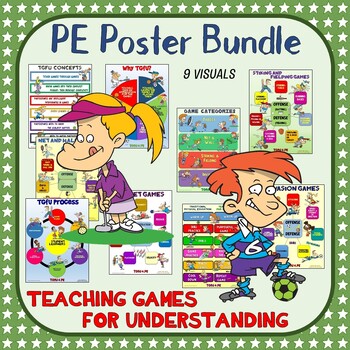
Mitchell, S.A., J.L. Oslin & L.L. Griffin. (2006). Teaching Sport Skills: A Tactical Games Approach. Champaign, IL: Human Kinetics, 2nd edition.
MoE [Ministry of Education] Malaysia. (1998). Malaysian Physical Education Syllabus. Kuala Lumpur: Curriculum Development Centre, Ministry of Education.
MoE [Ministry of Education] Malaysia. (2001). Falsafah Pendidikan Kebangsaan: Matlamat dan Misi (National Philosophy of Education: Goals and Mission). Kuala Lumpur: Curriculum Development Centre, Ministry of Education.
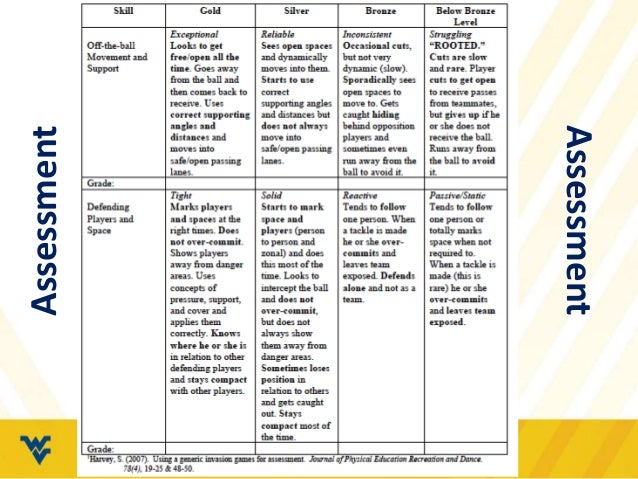
Pangrazi, R.P. (2001). Dynamic Physical Education for Elementary School Children. Needham Heights, MA: Allyn & Bacon, 13th edition.
Pangrazi, R.P. & C.M. Casten. (2007). Dynamic Physical Education for Elementary School Children. San Francisco, CA: Cummings, 15th edition.
Piaget, J. (1973). The Child and Reality. New York, USA: Grossman, Translation.
Piaget, J. & B. Inhelder. (1969). The Psychology of a Child. New York, USA: Basic Books, Translation.
Piipari, S. et al. (2009). “Relationship between Physical Education Students’ Motivational Profiles, Enjoyment, State Anxiety, and Self-Reported Physical Activity” in Journal of Sport Science and Medicine, 8, pp.327-336.
Rengasamy, S. (2006). “The Current Status of Teaching Cardiovascular Endurance among Malaysian School Children: Theory and Practice” in Masalah Pendidikan, 29, pp.91-101.
Richard, J.F. & L. Griffin. (2003). “Authentic Assessment in Games Education: An Introduction to Team Sport Assessment Procedure and Game Performance Assessment Instrument” in J. Butler et al. [eds]. Teaching Games for Understanding in Physical Education and Sport. Oxon Hill: AAHPERD.
Richard, J.F. & N. Wallian. (2005). “Emphasizing Students Engagement in Construction of Game Performance” in L. Griffin & J. Butler [eds]. Teaching Games for Understanding: Theory, Research, and Practice. Champaign, IL: Human Kinetics, pp.19-32.
Rovegno, I. & J.P. Dolly. (2006). “Constructivism Perspectives on Learning” in D. Kirk, D. McDonald & May O’Sullian [eds]. Handbook of Physical Education. London, UK: Sage, pp.242-261.
Rovegno, I., M. Nevett & M. Babiaz. (2001). “Learning and Teaching Invasion Game Tactics in 4th Grade: Instructional and Theoretical Perspective” in Journal of Teaching Physical Education, 20(4), pp.341-351.
Salleh, A.R. (1997). “The Attitudes towards Physical Education of Students from Different Ethnic Groups at Secondary School Level in Malaysia”. Unpublished Ph.D. Thesis. Manchester, UK: University of Manchester.
Sanmuga, N. (2008). “The Effects and Sustainabilities of Training Programmes Using Teaching Games for Understanding (TGfU) with Different Teaching Style on Students with Varying Hockey Skill Levels”. Paper presented at 1st Asia Pacific Sport in Education Conference in Adelaide, Australia.
Invasion Games Teaching Games For Understanding Students
Sharifah, M. (2007). “Merintis Kurikulum ke Arah Membangun Modal Insan Gemilang”. Paper presented in the Persidangan Kurikulum Kebangsaan, Pusat Perkembangan Kurikulum, Kementerian Pelajaran Malaysia.
Tan, S. (2005). “Implementing Teaching Games for Understanding: Stories of Change” in L. Griffin & J. Butler [eds]. Teaching Games for Understanding: Theory, Research, and Practice. Champaign, IL: Human Kinetics, pp.107-124.
Thorpe, R.D. & D.J. Bunker. (1997). “A Changing Focus in Games Teaching” in L. Almond [ed]. Physical Education in School. London, UK: Kogan Page, pp.50-80.
Thorpe, R.D., D.J. Bunker & L. Almond. (1984). “A Change in the Focus of Teaching Games” in M. Pieron & G. Graham [eds]. Sport Pedagogy: Olympic Scientific Congress Proceeding, Vol.6. Champaign, IL: Human Kinetics, pp.163-169.
Turner, A.P. & T.J. Martinek. (1999). “An Investigation into Teaching Games for Understanding: Effects on Skill, Knowledge, and Game Play” in Research Quarterly for Exercise and Sport, 70, pp.286-292.
Webb, P. & P. Pearson. (2008). “An Integrated Approach to Teaching Games for Understanding”. Paper presented at 1st Asia Pacific Sport in Education Conference in Adelaide, Australia. Also being published in Journal of Health, Physical Education, Recreation & Dance, 67(1), pp.28-33.
Wee, E.H. (2001). “Attitude of Physical Education Teachers towards Physical Education and Implementation of Physical Education Program in Secondary School”. Unpublished Ph.D. Thesis. Kuala Lumpur, Malaysia: University of Malaya.
Wee, E.H. (2008). “Physical Education in Malaysia: A Case Study of Fitness Activity in Secondary School Physical Education Classes”. Paper presented in the Conference on Innovative Practices in Physical Education and sports in Asia, organized by UNESCO in Bangkok, Thailand, pp.22-43.
Werner, P. & L. Almond. (1990). “Model of Games Education” in Journal of Physical Education, Recreation, and Dance, 61(4), pp.23-27.
Werner, P., R. Thorpe & D. Bunker. (1996). “Teaching Games for Understanding: Evolution of a Model” in Journal of Physical Education, Recreation, and Dance, 67(1), pp.28-33.
Wuest, P.A. & C.A. Butcher. (2006). Foundation of Physical Education and Sport. New York: McGraw-Hill, 15th edition.
DOI: https://doi.org/10.2121/atikan-journal.v1i2.115
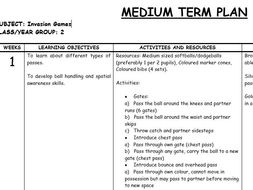
DOI (PDF): https://doi.org/10.2121/atikan-journal.v1i2.115.g115
Refbacks
- There are currently no refbacks.
ATIKAN: Jurnal Kajian Pendidikan. This work is licensed under a Creative Commons Attribution-ShareAlike 4.0 International License
View My Stats
